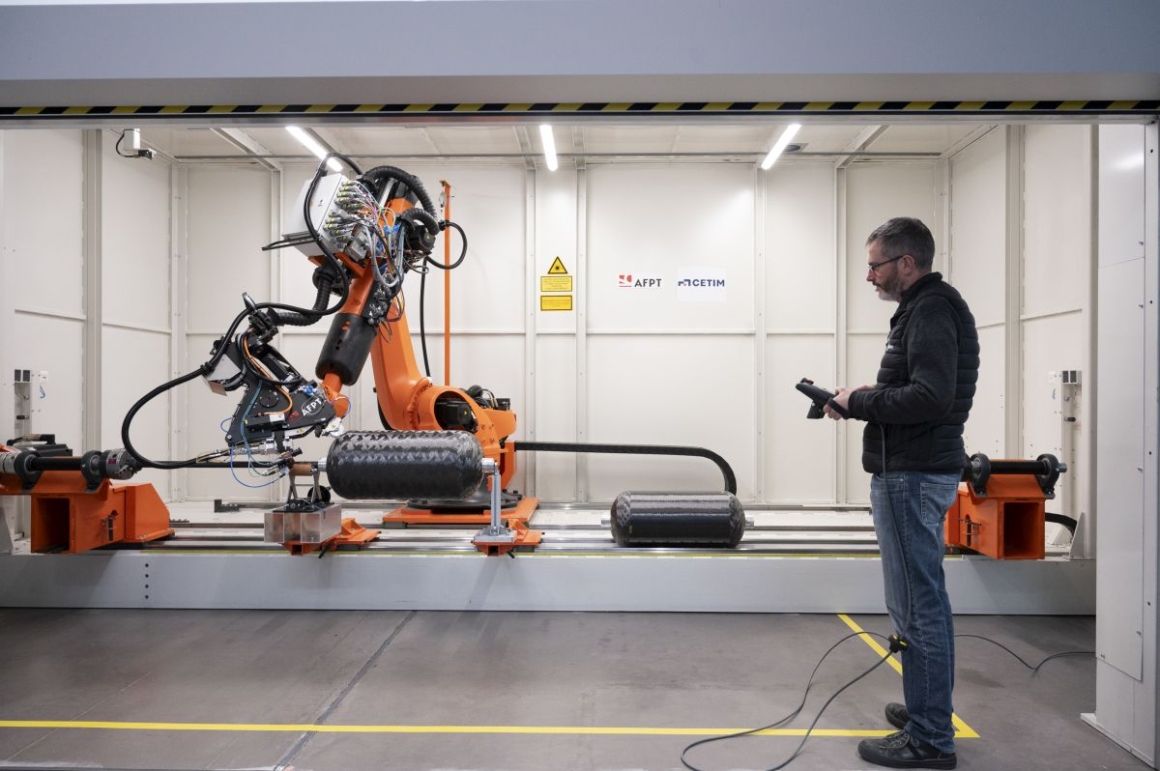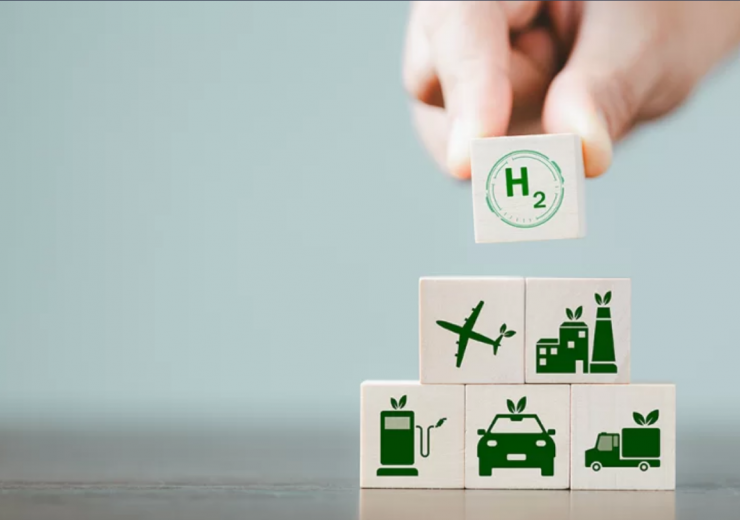The French Technical Centre for Mechanical Industries (Cetim) is a technology accelerator that relies on more than 1,100 experts, including doctors, engineers, and technicians to help industries meet major energy and environmental challenges. Highlighting its €25 million commitment to hydrogen research and training is Didier Fribourg, the scientific and technical director, as he presents the ambitious HyMEET project.
What is the HyMEET project?
HyMEET (Hydrogen Material and Equipment Engineering and Testing Centre) is a strategic R&D and support programme for the mechanical engineering industries and their customers. Set up by Cetim, its aim is to anticipate the needs and societal changes linked to the development of the hydrogen sector. It focuses on the added value for professionals in the mechanical engineering industries so that they can position themselves in these new markets.
The HyMEET programme covers the entire value chain, including production, storage, distribution, uses, etc. It aims to develop 4 to 7 TRL innovations and represents a €25 million investment plan to equip our centre with specific resources, particularly for characterisation purposes.
How far have you got with the implementation?
We’ve committed around half of the €25 million budget, and €7-8 million has already been invested in R&D operations.
The programme was launched at the end of 2021, and to date we have launched 4 R&D projects applied to the characterisation of materials, as well as around ten collaborative projects financed by European funds, Ademe, etc. In 2023, around 160 people worked on these initiatives, representing 25 FTEs.
What testing facilities are available and where are they located?
For the time being, the tools are being used at Cetim’s current site in La Jonelière (Nantes, Atlantic France), but the programme also includes the creation of a dedicated platform at the Cheviré site in Nantes, which will be operational from the first half of 2025. This platform will be unique in Europe in its focus on materials and mechanical equipment. We will deploy a range of test facilities dedicated to the mechanical characterisation of materials in a hydrogen environment:
- Fatigue benches and pressure benches up to 400 bar or more. The aim is to help professionals make informed choices about the materials they use. They will also be able to analyse materials using thermal desorption mass spectrometry (TDS).
- A range of dedicated test benches for sealing systems at different scales, enabling equipment to be tested at pressures up to 1,000 bar and leakage phenomena to be studied. This includes the ability to use modelling to gain a better understanding of real-world behaviour. They are a unique feature in Nantes, giving the site a truly international dimension.
- A liquefier suitable for both helium and hydrogen to characterise materials, sensors, sealing systems, and equipment under cryogenic conditions for liquid hydrogen. A number of projects are underway in the aerospace industry, particularly at Airbus, involving very low-temperature tanks and distribution circuits. Thanks to cryostats, the temperature can be as low as 20 Kelvin, which is the temperature of liquid hydrogen.
- Thermal expansion characterisation or thermomechanical analysis (TMA) to study the behaviour of materials at very low temperatures.
- Test engineering to characterise all types of equipment (valves, fittings, etc.) in a hydrogen environment at very high pressures and extreme temperatures.
- Various means of pressurising and ageing materials and mechanical components: another specific feature of this platform is that it provides the means to study the risks specific to the hydrogen environment (wear of bearings, seals, guides, etc.).
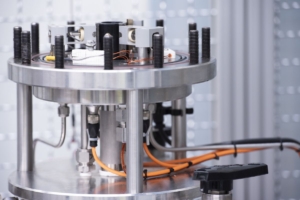
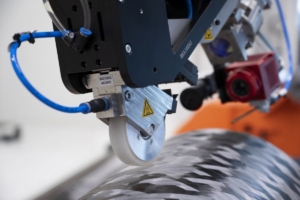
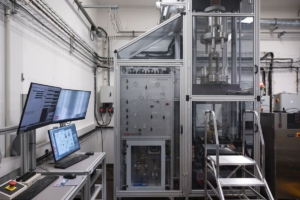
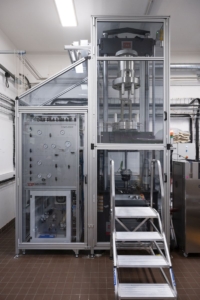
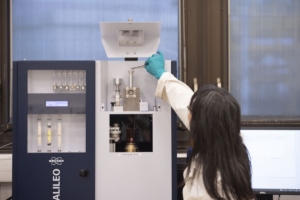
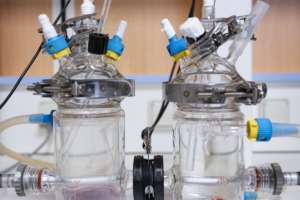
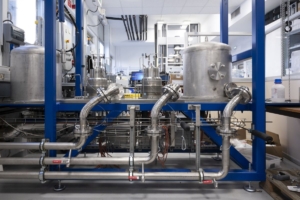
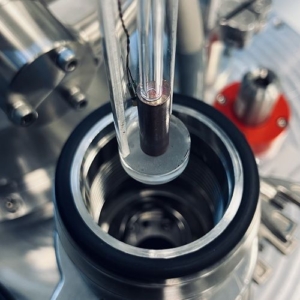
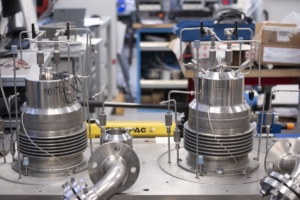
© Hervé Boutet / Cetim
What are the technical issues that most mobilise professionals?
For hydrogen production, there are issues surrounding increasing production rates to supply the equipment and basic parts needed for electrolysers to produce low-carbon hydrogen.
There are also requirements to control cleanliness throughout the lifecycle, both at start-up and during operation, to ensure that the efficiency of the generators is not reduced.
Another recurring challenge is transport and distribution, with the choice of materials for piping and the issue of tightness in distribution.
There are also questions regarding regulations and how they apply to different uses, such as off-road or rail transport compared to road transport: how do the rules apply when you move from one application to another?
Why did you choose the Atlantic France region as the location for this platform?
The choice of Nantes as the location for setting up this platform reflects, first and foremost, the presence of specific expertise in the current Cetim sites in Nantes, whether it be on sealing, gas pressure control, or composite tanks.
What’s more, thanks to the quality of these players and the diversity of renewable resources available in Atlantic France for these different types of production, the region aims to become a primary hub for the production and use of renewable hydrogen. One of the area’s real assets is the diversity of its economic players, who are able to position themselves at each stage of the value chain.
And why have you chosen to invest so much effort into hydrogen?
During the initial development phase of the sector, we identified that certain technological barriers would require the skills of mechanics, who could therefore play a strategic role.
The programme also has an important training component: we are implementing various actions, firstly by adapting our offer to the development of hydrogen, but also by creating specific training courses. We’re also looking to become more involved in initial training courses to build up a general skills base in the hydrogen sector.
What is your vision for the development of the hydrogen sector in the medium term?
The HyMEET programme runs until the end of 2026, but we’re obviously looking much further ahead. Cryogenics is a significant concern for the future. We are trying to align our work with the priorities set by the market and we are paying close attention to how the whole ecosystem is evolving. The aim is to develop a global vision of the development of the hydrogen industry on an international scale. The applications are more or less mature, but the priority today is to have enough green, carbon-free hydrogen at a reasonable price.
We are now in a phase of maturation for the industry: some options have been put on hold and others have been identified as priorities. The challenge now is to enter a phase of consolidation of production on the one hand and distribution on the other, and these processes will take a long time. In any case, the two main priority applications are off-road and heavy-duty mobility and the decarbonisation of industrial sites (as a substitute for natural gas).


 日本語
日本語  Français
Français 
